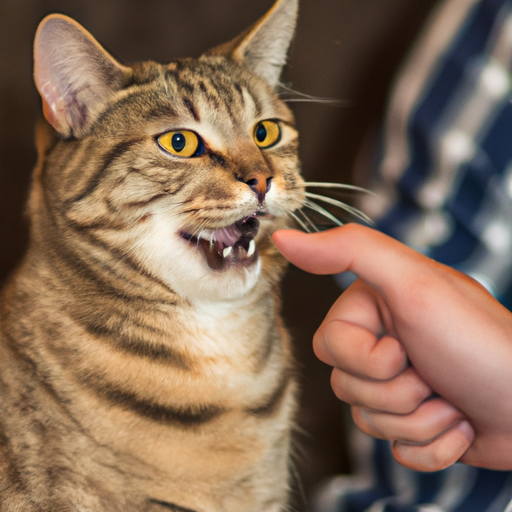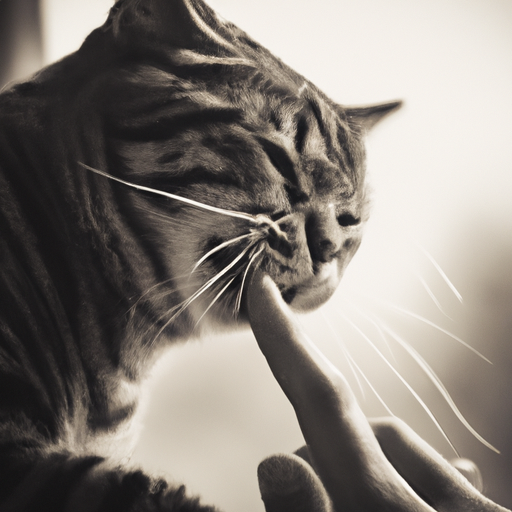Why Do Cats Bite You
Understanding the behavior of your feline companion can be a tricky business, and among the most unusual behaviors is the mystifying cat bite. “Why Do Cats Bite You” explores this beguiling action, unraveling its possible reasons, as well as offering a few smart solutions to deal with your kitty’s surprising nip. Since cat behavior often has unique subtleties, getting to know why cats might indulge in a little chomp will help you comprehend your pet’s underlying emotions, thus strengthening your bond with your furry friend.
Understanding Cat Behavior
Before diving into the specifics of cat bites and the whys behind them, it’s important to understand the broader umbrella of cat behavior. Don’t forget, cats are nuanced creatures, each with unique idiosyncrasies and attitudes.
The Nature of Cats
Cats are, by nature, solitary hunters who rely on their keen instincts and sharp agility for survival. This predatory instinct is imprinted deep within their DNA and governs much of their behavior, even in a domesticated setting.
Different Types of Cat Behaviors
Among the various behaviors exhibited by felines, some remain more consistent across the species. These include hunting, grooming, territory marking, and social behaviors. Interestingly, even non-threatening activities, such as playing or bonding with a fellow feline or human, can evolve from these primal behaviors.
Common Characteristics Found in Most Cats
Common traits found in most cats include independence, curiosity, territoriality, and a penchant for routine. Understanding these characteristics can aid in decoding their behavior, including why a cat might decide to chomp down on your hand out of the blue.
The Psychology Behind Cat Bites
The act of biting is far from arbitrary when it comes to cats—it’s deeply rooted in their psychology.
Cat Psychology Basics
As solitary predators, cats have evolved a complex set of communication signals, both verbal and non-verbal. Biting, amongst these, is particularly significant as it often serves multiple purposes, ranging from play to aggression.
How Cats Communicate
Cats communicate through a mixture of vocalizations, body language, and tactile cues. Biting, in this context, is a tactile form of communication that can signal a variety of messages, which we may misinterpret if we are not tuned into the nuances of feline language.
Emotions Expressed Through Biting
Despite their reputation for being aloof, cats experience a wide range of emotions. Biting can express several of these emotions, including fear, anxiety, frustration, and even affection.

Signs Your Cat Might Be About to Bite
Identifying when a cat is about to bite can prevent an unnecessary unpleasant experience for both you and the cat.
Visual Cues and Physical Signs
Typical signs of an impending bite include a twitching tail, pinned back ears, dilated pupils, and a hunched back. Recognizing these cues can provide valuable insight into your cat’s emotional state and prevent unwanted bites.
Post-bite Reactions from Cats
Cats’ reactions after biting can also signal their emotional state. They might gaze directly at you, hiss, or run away following a bite incident, each implying different feelings or intentions.
Identifying Signs of Agitation or Discomfort
Cats might bite to express discomfort or agitation. Excessive grooming, overeating, hiding, or unexplained aggression can all signal an underlying problem that could result in biting.
The Role of Play in Cat Bites
Playtime serves multiple roles in a cat’s life, including satisfaction of predatory instincts, bonding, and honing of skills. Biting, however, is an integral part of this play behavior.
How Cats Play
Cats play by mimicking hunting behaviors. This means that play often involves stalking, pouncing, and the inevitable playful bite.
Why Play Can Lead to Bites
During play sessions, a cat’s predatory instincts may kick in, causing them to bite as if they’re hunting. This is especially true if they get overly excited or if the play session stimulates their hunting instincts too much.
Difference Between Play Bites and Aggressive Bites
Typically, play bites are gentler and do not break the skin. Aggressive bites, on the other hand, are usually harder and may be accompanied by hissing or growling.

Cat Bites as a Form of Communication
Just like humans, cats have a spectrum of communication tools at their disposal. Biting is one such tool that sends potent signals.
What a Cat Bite Can Signify
Bites can indicate a variety of things including playfulness, discomfort, annoyance, fear, or affection. Understanding these signals can aid in building a harmonious relationship with your furry friend.
How Cats’ Communication Styles Differ From Humans’
Unlike humans who rely heavily on verbal communication, cats largely communicate through body language and tactile signals, like biting.
Understanding Cat Language
Learning to understand cat language – from the swish of a tail to a soft bite – can decode many messages your cat might be trying to convey.
Understanding Love Bites
In the world of feline behavior, not every bite is a signal of distress or aggression. Some bites are a sign of affection, these are known as ‘love bites’.
What Love Bites Are
Love bites are gentle nibbles that a cat may give while being stroked or during a relaxed interaction. They are a way for a cat to communicate affection or pleasure.
Why Cats Give Love Bites
Cats use love bites to signal a positive social bond and it’s seen as a form of social grooming. They could also be indicating that while they enjoy the petting, they’ve had enough for now.
The Differences Between Love Bites and Regular Bites
Love bites are usually gentler, and the cat’s overall body language during a love bite is relaxed and content. A ‘regular’ bite, intended as a warning or triggered by fear or aggression, is generally harder and may be coupled with other defensive body language.
The Health Risks Associated With Cat Bites
Despite being relatively small, cat bites do carry potential health risks.
Possible Infections from Cat Bites
Cats have bacteria in their mouths that can cause infections if a bite breaks the skin. These infections can range from minor to serious, with the potential to spread throughout the body if left untreated.
Importance of Cleaning and Treating Cat Bites
It’s crucial to clean and treat a cat bite as soon as it happens in order to prevent infection.
When to Seek Professional Medical Attention
If you see signs of an infection, such as swelling, redness, or if you start to feel unwell, it’s crucial to seek medical advice immediately.
Cat Bites and Aggression
While many bites are fueled by play or affection, some do stem from aggression.
What Constitutes Cat Aggression
Aggression is signaled by a variety of behaviors such as hissing, swatting, growling, and biting. These behaviors can be triggered by various factors like fear, territoriality, or health issues.
Why Some Cats are More Aggressive Than Others
Factors that might dictate a cat’s aggression level can include past trauma, insufficient socialization, or underlying medical conditions.
How Biting Plays into Cat Aggression
A hard, fast bite that comes with other aggressive body language is a clear sign of cat aggression.
How to Discourage Cat Biting
One way to understand cat bites and avoid negative experiences with your pet is to discourage biting from a young age.
Training Techniques to Reduce Biting
These could include redirecting biting to toys during play, stopping interactions if biting occurs, or using positive reinforcement techniques.
Responding to a Cat Bite
Remaining calm and not punishing your cat can prevent escalation and help them to eventually learn that biting is undesirable.
Building Trust to Reduce Aggression
Building a foundation of trust with your cat can reduce fear-based aggression and in turn lower the chance of a bite incident.
Consulting with Professionals About Cat Biting
Professional guidance can prove invaluable when it comes to navigating complex feline behaviors such as biting.
When to Involve a Veterinarian or an Animal Behaviorist
If your cat’s biting doesn’t improve through basic training or seems out of character, a professional should be consulted.
The Role of Professionals in Diagnosing Underlying Issues
Professionals can provide crucial insights into potential medical or psychological issues that could be triggering the biting behavior.
Following Professional Advice and Recommendations
This can lead to improvement in your cat’s behaviour, a stronger bond, and a happier home.







